The Boxer Who Became a Global Symbol
From Ring to Revolution – Ali’s Impact on Sport, Identity, and Global Consciousness
Introduction – More Than a Fighter
Muhammad Ali was a singular force in the 20th century—a man whose fists moved crowds, whose words moved minds, and whose presence moved history. He was not merely a sportsman, but a cultural architect. His life intersected with some of the most volatile and transformative moments in modern history: the civil rights movement, the Vietnam War, the rise of global media, and the evolution of athlete activism. Ali’s impact cannot be confined to boxing. He redefined what it meant to be a public figure, a Black man, a Muslim, and a global citizen.

The Birth of a Legend – Cassius Clay Becomes Muhammad Ali
Ali’s journey began in Louisville, Kentucky, where a stolen bicycle led a young Cassius Clay to a boxing gym. His early amateur career was marked by speed, precision, and an uncanny ability to read opponents. At the 1960 Rome Olympics, Clay won gold in the light heavyweight division, showcasing not just skill but charisma. Upon returning home, he was celebrated—but also confronted by the realities of segregation.
In 1964, after defeating Sonny Liston to become heavyweight champion, Clay announced his conversion to Islam and adopted the name Muhammad Ali. This was not a superficial change—it was a radical act of self-definition. In a nation still grappling with racial inequality, Ali’s embrace of his faith and identity challenged dominant narratives and forced Americans to confront their assumptions about race, religion, and patriotism.

Boxing Reimagined – Ali’s Technical and Psychological Innovations
Ali’s boxing style was revolutionary. He defied the conventions of heavyweight fighting, which traditionally favored brute strength and stationary power. Instead, Ali moved like a welterweight—dancing, dodging, and striking with surgical precision. His footwork, famously dubbed the “Ali Shuffle,” was not just showmanship—it was a tactical tool that disrupted opponents’ rhythm and created openings.
The “Rope-a-Dope” strategy, used against George Foreman in the 1974 “Rumble in the Jungle,” exemplified Ali’s cerebral approach. By absorbing punishment while leaning on the ropes, Ali allowed Foreman to exhaust himself before launching a counterattack. This strategy required not just physical endurance but psychological mastery.
Ali’s verbal tactics were equally potent. He weaponized language—taunting opponents, crafting rhymes, and dominating press conferences. These performances were not mere bravado; they were psychological warfare, designed to undermine confidence and control the narrative.
Political Defiance – Ali’s Stand Against the Vietnam War
In 1967, Ali refused induction into the U.S. military, citing his religious beliefs and moral opposition to the Vietnam War. His statement—“I ain’t got no quarrel with them Viet Cong”—became a rallying cry for anti-war activists. The consequences were severe: Ali was stripped of his titles, banned from boxing, and faced a five-year prison sentence.
This act of defiance elevated Ali from athlete to icon. He became a symbol of resistance, integrity, and sacrifice. Unlike many public figures who avoided controversy, Ali embraced it. He stood firm in his convictions, even when it cost him his livelihood. His legal battle culminated in a 1971 Supreme Court decision that overturned his conviction, affirming his right to conscientious objection.
Ali’s stance resonated globally. In countries struggling with imperialism, dictatorship, or war, Ali was seen as a beacon of moral courage. His refusal to compromise made him a hero not just in America, but across Africa, Asia, and Latin America.
Civil Rights and Cultural Reverberations – Ali as a Movement
Ali’s life intersected with the civil rights movement, but he carved a distinct path. While figures like Martin Luther King Jr. advocated integration, Ali championed Black pride and self-determination. His alignment with the Nation of Islam and figures like Malcolm X positioned him as a radical voice in a conservative era.
Ali’s unapologetic Blackness challenged stereotypes. He refused to be deferential, refused to “know his place,” and refused to be silenced. This defiance inspired a generation of activists, artists, and thinkers. He became a cultural mirror—reflecting the tensions, aspirations, and transformations of Black America.
Globally, Ali’s identity resonated with post-colonial societies seeking dignity and autonomy. In Ghana, Egypt, and Indonesia, Ali was celebrated not just as a boxer, but as a symbol of resistance against Western hegemony. His life became a template for cultural sovereignty.
Media and Myth – The Making of a Global Persona
Ali’s rise coincided with the explosion of television and global media. His fights were broadcast worldwide, turning him into a household name. But Ali didn’t just appear on screen—he commanded it. His interviews were theatrical, his press conferences poetic, and his public appearances magnetic.
Documentaries like When We Were Kings and biopics like Ali (starring Will Smith) helped cement his legacy for new generations. These films didn’t just recount his victories—they explored his philosophy, his struggles, and his humanity.
Ali’s image became iconic. Photographs of him standing over Sonny Liston, arms raised in triumph, became visual shorthand for defiance and dominance. Murals, posters, and magazine covers immortalized his face, making him one of the most recognizable figures in history.
Athlete Activism – Ali’s Blueprint for Speaking Out
Ali redefined the role of the athlete. Before him, sports figures were expected to entertain, not engage. Ali shattered that mold. He used his platform to speak out on race, war, religion, and justice. He showed that athletes could be intellectuals, activists, and moral leaders.
This legacy lives on. Colin Kaepernick’s kneeling protest, Serena Williams’ advocacy for gender equity, and LeBron James’ political commentary all trace their lineage to Ali. He proved that speaking out could cost endorsements—but earn respect.
Ali’s activism also pressured institutions. Sports leagues, media outlets, and governing bodies were forced to reckon with the political dimensions of sport. His life expanded the boundaries of what athletes could say, do, and represent.

Globalization of Boxing – Ali’s Role in Expanding the Sport
Ali’s fights were not confined to American arenas. He fought in Zaire, the Philippines, and the UK, turning boxing into a global spectacle. These events were more than matches—they were cultural phenomena.
The “Rumble in the Jungle” in Kinshasa was a celebration of African pride. The “Thrilla in Manila” was a brutal ballet that captivated Asia. Ali’s international presence helped diversify boxing’s audience and talent pool.
Today, boxing thrives in regions Ali helped spotlight. Champions hail from Ukraine, Mexico, Japan, and Nigeria. Ali’s global reach laid the foundation for a truly international sport.
The Future of Boxing – Ali’s Enduring Blueprint
Ali’s influence shapes the future of boxing in profound ways. His emphasis on narrative—on personal storylines, rivalries, and symbolism—has become central to modern promotions. Fighters are now marketed not just for skill, but for character.
Technically, Ali’s footwork, timing, and psychological tactics are studied by trainers and analysts. His fights are dissected frame by frame, revealing layers of strategy and improvisation.
Ali also helped democratize boxing. His global appeal encouraged the development of training programs, gyms, and federations in underserved regions. The sport’s future is more diverse, inclusive, and narrative-driven—thanks to Ali.
Humanitarian Impact – Ali’s Post-Ring Mission
After retiring, Ali dedicated himself to humanitarian work. He traveled to refugee camps, disaster zones, and conflict areas, offering aid and solidarity. He met with world leaders, advocated for peace, and supported charitable causes.
Ali’s humanitarianism was not performative—it was personal. He believed in service, empathy, and global unity. His work earned him accolades, including the Presidential Medal of Freedom.
Ali’s post-ring life showed that greatness is not confined to competition. It extends to compassion, courage, and contribution.
Parkinson’s and Perseverance – A New Kind of Fight
In 1984, Ali was diagnosed with Parkinson’s disease—a neurodegenerative condition that affects movement and speech. The diagnosis was devastating, but Ali faced it with characteristic grace.
He remained publicly active, raising awareness and funds for research. His appearance at the 1996 Olympics, where he lit the torch with trembling hands, was a moment of global emotional resonance.
Ali’s battle with Parkinson’s redefined strength. He showed that vulnerability is not weakness, and that dignity can persist even in decline.
Ali and Islam – Faith as Identity and Bridge
Ali’s conversion to Islam was a turning point in his life. It provided spiritual grounding, moral clarity, and cultural identity. His faith informed his decisions, from refusing the draft to advocating for justice.
Over time, Ali’s religious views evolved. He embraced interfaith dialogue, promoted peace, and became a bridge between cultures. His identity as a Muslim resonated globally, especially in regions where Islam was misunderstood or marginalized.
Ali remains one of the most beloved Muslim figures in history—a symbol of faith, integrity, and unity.
Ali’s Rivalries – The Men Who Sharpened the Legend
Ali’s greatness was forged in the crucible of rivalry. His trilogy with Joe Frazier was not just a series of fights—it was a psychological and cultural saga. Their first bout in 1971, dubbed the “Fight of the Century,” saw Ali suffer his first professional defeat. The rematch in 1974 was a tactical redemption. But it was the third fight—the “Thrilla in Manila”—that became legendary. Brutal, exhausting, and emotionally charged, it pushed both men to their limits. Ali later said it was the closest he’d come to death.
His bout with George Foreman in Zaire was another defining moment. Foreman was younger, stronger, and heavily favored. But Ali’s Rope-a-Dope strategy turned the tide, and he knocked Foreman out in the eighth round. This fight wasn’t just a victory—it was a masterclass in strategy, endurance, and psychological warfare.
Ali’s early upset of Sonny Liston in 1964 launched his myth. Liston was feared, dominant, and seemingly invincible. Ali’s victory shocked the world and marked the beginning of a new era. These rivalries weren’t just athletic—they were mythological, shaping Ali’s narrative and elevating boxing itself.

Ali and Race – Redefining Black Masculinity
Ali’s public persona challenged prevailing notions of Black masculinity. In an era when Black athletes were expected to be humble and deferential, Ali was loud, proud, and unapologetic. He refused to conform to white expectations, instead embracing a radical self-image rooted in pride and defiance.
His rhetoric—“I’m pretty,” “I’m the greatest”—was more than bravado. It was a rejection of invisibility and inferiority. Ali’s confidence became a form of resistance, inspiring Black youth to see themselves as powerful and worthy.
Ali’s alignment with the Nation of Islam and his critique of white supremacy positioned him as a cultural revolutionary. He wasn’t just fighting opponents—he was fighting systems. His life became a blueprint for reclaiming identity, dignity, and voice.
Ali and Language – The Power of Poetic Combat
Ali was a master of language. His rhymed taunts—“If you wanna lose your money, then bet on Sonny”—were both entertaining and strategic. He used poetry to destabilize opponents, energize fans, and control media narratives.
His interviews were theatrical performances. He spoke in metaphors, similes, and punchlines, turning press conferences into stages. This linguistic flair made him a media magnet and a cultural icon.
Ali’s speech patterns influenced hip-hop, spoken word, and sports commentary. His blend of rhythm, wit, and defiance became a template for expressive resistance. He showed that language could be a weapon, a shield, and a bridge.
Ali and the Olympics – From Gold to Torchbearer
Ali’s Olympic journey began in 1960, when he won gold in Rome. This victory was symbolic—a young Black American triumphing on the world stage. But upon returning home, Ali faced segregation and racism, prompting him to question the value of symbolic victories.
In 1996, Ali returned to the Olympics in Atlanta to light the torch. His hands trembled from Parkinson’s, but his spirit was unshaken. The moment was deeply emotional—a global tribute to resilience, legacy, and transformation.
Ali’s Olympic legacy is multifaceted. He represents both the promise and the paradox of sport—its ability to elevate individuals while exposing societal flaws. His presence at the Games remains one of the most iconic moments in Olympic history.
Ali and Mental Health – The Unspoken Struggles
Ali’s public life was filled with triumph, but also with emotional complexity. The pressures of fame, the toll of physical punishment, and the isolation of illness created psychological challenges. While Ali rarely spoke openly about mental health, his vulnerability was visible.
His post-career life included periods of withdrawal, introspection, and spiritual searching. He grappled with identity, legacy, and mortality. These struggles humanized him, revealing the cost of greatness.
Ali’s openness about Parkinson’s helped destigmatize neurological conditions. He showed that strength includes fragility, and that courage includes honesty. His life invites deeper conversations about athlete mental health, resilience, and support.
Ali and Art – The Fighter as Muse
Ali’s image and story have inspired countless artists. Painters, sculptors, and muralists have captured his likeness in moments of triumph, defiance, and reflection. His face—angular, expressive, iconic—became a canvas for cultural meaning.
Writers have explored Ali’s life as metaphor. Novels, poems, and essays use his battles to explore themes of identity, resistance, and transformation. His story transcends biography—it becomes allegory.
Performance artists have drawn from Ali’s rhythm, movement, and charisma. His influence appears in dance, theater, and spoken word. Ali is not just a subject—he is a medium through which artists express struggle, beauty, and power.
Ali and Education – Teaching the Legend
Ali’s life is studied in classrooms around the world. His story intersects with history, ethics, media studies, and cultural theory. Educators use his narrative to explore civil rights, war, religion, and identity.
Youth programs often cite Ali as a role model. His journey from Louisville to global icon inspires students to pursue excellence, speak truth, and embrace complexity. His life offers lessons in courage, conviction, and transformation.
Ali’s legacy also informs pedagogical models. His multidimensional life encourages interdisciplinary teaching—blending sport, politics, and philosophy. He is not just a historical figure—he is a living curriculum.

Ali and Technology – Preserving the Legacy
Modern technology plays a crucial role in preserving and analyzing Ali’s legacy. His fights are digitally remastered, allowing new generations to study his techniques in high definition. AI tools dissect his footwork, timing, and strategy, offering insights once invisible to the naked eye.
Virtual exhibits and holograms bring Ali’s story to life in museums and classrooms. Interactive platforms allow users to explore his biography, watch interviews, and engage with archival materials.
Digital archives ensure that Ali’s legacy remains accessible, dynamic, and evolving. Technology transforms memory into experience, allowing Ali’s influence to persist across time and space.
Ali and Fashion – Style as Statement
Ali’s fashion choices were deliberate, expressive, and symbolic. In the ring, his robes and trunks were bold—often embroidered with slogans or symbols. Outside the ring, his suits, sunglasses, and accessories reflected confidence and rebellion.
Ali’s style challenged norms. He dressed with flair, rejecting the subdued aesthetics expected of Black athletes. His fashion became a form of self-expression and cultural commentary.
Today, athletes and designers cite Ali as a fashion icon. His influence appears in streetwear, athletic apparel, and red carpet looks. He showed that style is not superficial—it is political, personal, and powerful.
Ali and the Environment – A Lesser-Known Advocacy
Though less publicized, Ali expressed concern for environmental issues. He spoke of harmony with nature, peace with the planet, and the need for stewardship. His spiritual beliefs included respect for creation and ecological balance.
Ali supported clean water initiatives, conservation efforts, and sustainable development. He saw environmental justice as part of human rights—a holistic vision of well-being.
His legacy invites deeper exploration of athlete environmentalism. Ali’s worldview reminds us that greatness includes care for the earth, and that advocacy can extend beyond the human sphere.
Ali and His Love Life – Romance, Family, and Private Complexity
Muhammad Ali’s love life was as layered as his public persona. He was married four times and fathered nine children, each relationship reflecting different phases of his evolution—spiritual, emotional, and personal.
His first marriage to Sonji Roi in 1964 was short-lived, strained by religious differences and Ali’s deepening commitment to Islam. His second marriage to Belinda Boyd (later Khalilah Ali) lasted a decade and coincided with some of his most iconic fights. Khalilah was a strong presence, often accompanying him to events and supporting his career, though their relationship was marked by infidelity and tension.
Ali’s third wife, Veronica Porsche, was with him during the later stages of his boxing career. Their daughter, Laila Ali, would go on to become a champion boxer herself, continuing the family’s athletic legacy. His final marriage to Lonnie Williams, his childhood friend, lasted until his death. Lonnie became his primary caregiver during his battle with Parkinson’s, offering stability and devotion.
Ali’s romantic life was complex—marked by passion, contradiction, and transformation. He was charismatic and deeply affectionate, but also struggled with fidelity and the demands of fame. His relationships reveal a man who, despite global adoration, sought intimacy, grounding, and love.
Ali and the Great Communicators – Billy Crystal, Michael Parkinson, Howard Cosell
Ali’s charisma attracted not only fans but legendary communicators who helped shape and amplify his myth. Among them, Billy Crystal, Michael Parkinson, and Howard Cosell stand out as key figures in the narrative architecture of Ali’s public life.
Billy Crystal, the comedian and actor, developed a deep friendship with Ali. His impersonations of Ali were affectionate tributes, and his eulogy at Ali’s funeral in 2016 was one of the most moving moments of the ceremony. Crystal understood Ali’s rhythm, humor, and humanity, and helped translate it for audiences beyond the ring.
Michael Parkinson, the British broadcaster, conducted some of the most insightful interviews with Ali. Their conversations were layered—probing Ali’s beliefs, his contradictions, and his philosophies. Parkinson’s respectful yet challenging style allowed Ali to reveal dimensions of himself rarely seen elsewhere.
Howard Cosell, the brash American sportscaster, had a unique rapport with Ali. Their banter was legendary—Cosell’s bombast met Ali’s wit in a dance of mutual respect and theatricality. Cosell defended Ali during his exile from boxing and helped keep his voice alive in the media.
Together, these communicators didn’t just document Ali’s life—they co-authored his legend. They provided platforms, context, and amplification, ensuring that Ali’s words were heard, remembered, and revered.

Ali and Don King – The Promoter, the Power, the Paradox
Don King, the flamboyant boxing promoter, played a pivotal role in Ali’s career—particularly in orchestrating the “Rumble in the Jungle” and the “Thrilla in Manila.” King’s ability to stage global spectacles aligned perfectly with Ali’s charisma and ambition.
Their relationship was complex. King admired Ali’s magnetism and used it to elevate boxing into a global business. Ali, in turn, benefited from King’s promotional genius, which brought unprecedented attention and revenue to the sport.
However, King’s reputation was controversial. Accusations of exploitation, financial manipulation, and self-interest surrounded his dealings with many fighters. Ali, ever trusting and generous, was not immune to these dynamics. While King helped build Ali’s myth, he also profited immensely from it.
The Don King effect is a study in paradox—visionary promotion intertwined with ethical ambiguity. His role in Ali’s career reflects the tension between sport and spectacle, legacy and leverage.
The Legend He Was – And Will Forever Be
Muhammad Ali’s legend is not confined to history—it is a living force. He was the rare figure whose myth grew while he was still alive, and whose death only intensified his symbolic power.
Ali’s name evokes courage, conviction, and charisma. He is referenced in classrooms, sermons, protests, and poems. His image is etched into murals, statues, and memory. He is not just remembered—he is invoked.
His legend lives in every athlete who speaks out, every artist who defies convention, and every individual who chooses principle over popularity. Ali’s story is not a closed book—it is a living text, constantly reinterpreted and reactivated.
He will forever be the greatest—not just for what he did, but for what he meant.
Ali’s Famous Life – The Public Odyssey
Ali’s life was one of the most publicly documented journeys in modern history. From his Olympic triumph in 1960 to his final public appearances in the 2000s, Ali was constantly in the spotlight.
He appeared on magazine covers, talk shows, and political stages. He dined with presidents, debated with philosophers, and entertained millions. His fame was not just athletic—it was cultural, political, and spiritual.
Ali’s public life was a balancing act—between performance and authenticity, myth and man. He navigated fame with grace, humor, and occasional contradiction. He was accessible yet enigmatic, beloved yet controversial.
His famous life was a mirror of the times—reflecting the hopes, fears, and transformations of a turbulent century.
Malcolm X and the Change of His Name – Identity as Revolution
Ali’s relationship with Malcolm X was transformative. The two met in the early 1960s, and Malcolm became a mentor, guiding Ali’s spiritual and political awakening. Their bond was deep—rooted in shared convictions and mutual admiration.
When Ali changed his name from Cassius Clay to Muhammad Ali, it was more than a religious act—it was a declaration of independence. He rejected the “slave name” imposed by history and embraced a new identity aligned with faith, dignity, and resistance.
The name change shocked the public and media, many of whom refused to acknowledge it. But Ali stood firm, insisting that his name reflected his true self. It was a radical act of self-definition, inspired by Malcolm’s teachings.
Their relationship later fractured due to internal tensions within the Nation of Islam, but Ali never stopped honoring Malcolm’s influence. The name Muhammad Ali remains one of the most powerful symbols of identity reclamation in modern history.
Ali the Great Communicator – The Man Who Saved a Life
Ali’s gift for communication extended beyond performance—it was deeply human. One of the most poignant stories involves a man who was contemplating suicide. Ali, hearing of the situation, personally intervened—speaking with the man, offering empathy, and ultimately convincing him to choose life.
This moment, rarely publicized, reveals the depth of Ali’s compassion. He wasn’t just a speaker—he was a listener. He understood pain, isolation, and despair, and used his voice to heal as well as inspire.
Ali’s communication was multidimensional—poetic, political, spiritual, and emotional. He could electrify a crowd, challenge a president, comfort a child, or save a life. His words were not just sound—they were soul.
Ali and the Vietnam War – A Fighter Who Refused to Fight
Muhammad Ali’s refusal to be drafted into the Vietnam War was one of the most consequential acts of political defiance in sports history. In 1967, at the height of his career, Ali stood before the draft board and declared, “I ain’t got no quarrel with them Viet Cong.” With that statement, he transformed from athlete to activist, from champion to conscientious objector.
His stance was rooted in religious conviction—Ali had joined the Nation of Islam and believed participation in war violated his faith. But it was also a moral and political decision. He saw the war as unjust, imperialistic, and racially biased. While Black Americans were being sent to fight abroad, they were still denied basic rights at home.
The consequences were severe. Ali faced some hard times and was stripped of his heavyweight title, and then banned from boxing for over three years, and faced jail time of a five-year prison sentence. He lost millions in earnings and endured public vilification. Yet he never wavered. His courage inspired a generation of anti-war activists and civil rights leaders.
Ali’s resistance helped shift public opinion. By the early 1970s, the tide had turned against the war, and Ali’s stance was vindicated. The Supreme Court overturned his conviction in 1971, affirming his right to religious and moral dissent. His legacy as a warrior for peace remains one of the most powerful chapters in his life.
The American Love-Hate Relationship – Reverence and Rejection
Ali’s relationship with America was paradoxical—he was both adored and reviled, celebrated and condemned. In the early years, many Americans saw him as brash, arrogant, and unpatriotic. His conversion to Islam, rejection of the draft, and outspoken views on race challenged the dominant cultural norms.
Mainstream media often refused to call him Muhammad Ali, insisting on “Cassius Clay.” He was labeled a traitor, a coward, and a radical. Yet even in rejection, he remained visible—his charisma, wit, and defiance made him impossible to ignore.
Over time, America’s view of Ali evolved. As the civil rights movement gained momentum and the Vietnam War lost support, Ali’s courage was reinterpreted as heroism. By the 1990s, he was embraced as a national treasure. He received the Presidential Medal of Freedom, lit the Olympic torch, and became a symbol of unity.
This love-hate arc reflects America’s own contradictions—its struggle with race, dissent, and identity. Ali forced the nation to confront its values, and in doing so, helped reshape them. His journey from pariah to icon is a testament to the power of principle and the possibility of transformation.

The Rope-a-Dope – Genius in the Ropes
The “Rope-a-Dope” strategy, immortalized in the 1974 “Rumble in the Jungle” against George Foreman, is one of the most brilliant tactical innovations in boxing history. Facing a younger, stronger opponent known for knockout power, Ali devised a plan that defied conventional wisdom.
He was tough and knew he could leaned against the ropes, allowing Foreman to unleash a barrage of punches. To the untrained eye, it looked like Ali was losing. But he was conserving energy, letting Foreman tire himself out. In the eighth round, Ali struck—landing a flurry of punches that knocked Foreman out and stunned the world.
The Rope-a-Dope was more than a strategy—it was a metaphor. It symbolized resilience, patience, and psychological mastery. Ali turned vulnerability into strength, chaos into control. He redefined what it meant to win—not through brute force, but through intellect and timing.
This tactic has been studied, emulated, and mythologized. It remains a cornerstone of boxing pedagogy and a symbol of strategic genius.
Why Movies Can’t Capture Ali – The Cinematic Elusiveness of a Legend
Despite numerous documentaries and biopics, no film has fully captured the essence of Muhammad Ali. His life is too vast, too layered, too paradoxical. He was a boxer, a poet, a prophet, a rebel, and a healer. To portray him is to attempt the impossible—to distill a universe into a frame.
Films like Ali (2001) starring Will Smith offer glimpses of his charisma and conviction. Documentaries like When We Were Kings reveal his tactical brilliance and cultural impact. But even the best cinematic efforts fall short of the full spectrum.
Ali’s voice, movement, and presence were uniquely magnetic. He was unscripted, unpredictable, and uncontainable. His life unfolded in real time, shaped by global events, sports and personal evolution. No actor, no director, no screenplay can replicate the spontaneity, depth, and scale of his existence.
Ali is not a character—he is a phenomenon. His story is best told through lived memory, archival footage, and collective reverence. Cinema can honor him, but it cannot contain him.

How Ali Changed Boxing, Sports, the World, and the Media – Forever
Muhammad Ali’s impact transcends sport. He changed the way boxing is fought, promoted, and perceived. He introduced movement, rhythm, and psychological warfare into the heavyweight division. He turned fights into narratives, athletes into icons, and arenas into stages.
In sports, Ali redefined the role of the athlete. He showed that competitors could be thinkers, activists, and cultural leaders. He expanded the boundaries of expression, making it possible for athletes to speak out on issues of justice, identity, and politics.
In the world, Ali became a symbol of resistance, dignity, and unity. He was embraced in Africa, Asia, and the Middle East—not just as a champion, but as a voice for the oppressed. His global appeal helped dismantle stereotypes and build bridges across cultures.
In media, Ali revolutionized the athlete’s relationship with the press. He controlled narratives, challenged journalists, and used language as a tool of empowerment. He turned interviews into performances, soundbites into slogans, and coverage into conversation.
Ali’s legacy is permanent. His influence is visible in athlete activism, global sports diplomacy, media strategy, and cultural identity. He didn’t just change boxing—he changed the architecture of public life. And we are still living in the world he helped build.
Muhammad Ali’s Moral Compass – The Ethics That Defined a Champion
At the core of Muhammad Ali’s greatness was not just physical prowess or rhetorical brilliance—it was an unwavering moral code. His values were not abstract ideals but lived convictions, tested in moments of crisis and expressed through action. Ali’s moral framework was rooted in courage, integrity, empathy, and spiritual discipline, making him one of the most ethically resonant figures in modern history.
Courage to Stand Alone
Ali’s refusal to be drafted into the Vietnam War was not a strategic move—it was a moral stand. He knew the consequences: loss of titles, income, public support, and possibly his freedom. Yet he chose principle over popularity. “I would rather go to jail,” he said, “than betray my beliefs.” This act of defiance wasn’t just political—it was deeply ethical. He believed that killing others in a war he deemed unjust violated both his faith and his conscience.
Integrity Over Image
Throughout his life, Ali remained true to his beliefs—even when they were unpopular. He embraced Islam at a time when it was misunderstood and vilified in the West. He changed his name despite media resistance. He spoke out on race, religion, and justice without fear of backlash. Ali’s integrity meant that he never performed for approval—he performed for truth.
Empathy and Compassion
Ali’s moral values extended beyond ideology—they were deeply human. He visited hospitals, refugee camps, and impoverished communities not for publicity, but out of genuine care. He comforted children, spoke with the sick, and even intervened to prevent a suicide. His empathy was not performative—it was instinctive. He saw people not as fans or followers, but as fellow souls.
Spiritual Discipline
Ali’s faith was central to his moral compass. Islam provided him with a framework for humility, service, and self-restraint. He prayed regularly, fasted during Ramadan, and spoke often of peace and unity. His spirituality was not rigid—it evolved over time, becoming more inclusive and bridge-building. But it remained a guiding force, shaping his decisions and anchoring his identity.
Accountability and Growth
Ali was not perfect—and he never claimed to be. He made mistakes, faced criticism, and experienced personal contradictions. But he was willing to learn, to apologize, and to grow. His moral strength lay not in flawlessness, but in his commitment to becoming better. He showed that greatness includes accountability, and that moral leadership requires humility.
Ali’s moral values were the foundation of his legend. They gave weight to his words, depth to his actions, and permanence to his legacy. He didn’t just fight opponents—he fought injustice. He didn’t just win titles—he won respect. And he didn’t just live a life—he lived a truth.
Laila Ali – The Daughter Who Carried the Flame
Laila Ali is more than the daughter of a legend—she is a legend in her own right. Born in 1978 to Muhammad Ali and Veronica Porsche, Laila inherited not only her father’s name but his spirit, discipline, and defiance. Her journey into boxing was unexpected, controversial, and ultimately triumphant—an echo of her father’s path, yet distinctly her own.
Breaking Expectations
When Laila announced her intention to become a professional boxer in the late 1990s, the decision was met with skepticism. Many questioned whether she could live up to her father’s legacy, while others doubted the legitimacy of women’s boxing itself. Laila faced not only the pressure of her surname but the burden of pioneering a sport still fighting for recognition.
Her debut fight in 1999 silenced critics. She won by knockout, displaying power, poise, and precision. Over the next decade, she remained undefeated, compiling a record of 24 wins with 21 knockouts. She held multiple world titles in the super middleweight and light heavyweight divisions, becoming one of the most dominant female boxers in history.
Honoring the Legacy
Laila’s style in the ring was aggressive yet calculated—much like her father’s. She used footwork, timing, and psychological edge to control fights. But her tribute to Ali went beyond technique. She carried his values: confidence without arrogance, strength tempered by grace, and a commitment to justice.
She often spoke of her father’s influence—not just as a boxer, but as a man of principle. Laila admired his courage, his faith, and his ability to rise above adversity. Her career was not an attempt to replicate his legacy, but to honor it through excellence and integrity.
Beyond the Ring
After retiring from boxing in 2007, Laila transitioned into media, entrepreneurship, and advocacy. She became a television host, health and wellness expert, and motivational speaker. Her work focuses on empowerment—especially for women and young girls—emphasizing strength, self-worth, and resilience.
Laila also became a voice for Parkinson’s awareness, continuing her father’s mission to support research and care. She has spoken at global forums, participated in charitable campaigns, and used her platform to amplify causes close to her heart.
A Legacy Continued
Laila Ali represents the continuation of Muhammad Ali’s legacy—not through imitation, but through evolution. She forged her own path, broke new ground, and expanded the definition of greatness. Her story is one of inheritance transformed into innovation.
She is not just the daughter of the greatest—she is a champion of her own making. And in every punch she threw, every word she spoke, and every life she touched, the flame of Ali burned on.
Why There Is No Sportsperson Like Muhammad Ali – The Legend Beyond the Punch
Muhammad Ali was not merely the greatest boxer of all time—he was a once-in-history convergence of athletic genius, moral courage, cultural resonance, and spiritual depth. No sportsperson before or since has embodied such a vast spectrum of influence. He was not just admired—he was transformative.
What made Ali different was not just what he did, but how he did it—and why. He fought with grace, spoke with poetry, resisted with conviction, and lived with purpose. His punch was powerful, but his presence was seismic. He didn’t just win fights—he won hearts, minds, and movements.
Ali’s charisma was elemental. He could command a room, electrify a crowd, and disarm an enemy with a smile. He was theatrical without being hollow, confident without being cruel. His bravado was rooted in belief—not just in himself, but in justice, dignity, and truth.
Even while living, Ali was a legend. Children in Ghana knew his name. Refugees in Lebanon hung his posters. Activists in Chicago quoted his speeches. He was a myth in motion—alive, accessible, and awe-inspiring. His fame was not manufactured—it was magnetic.
Ali’s impact extended far beyond sport. He changed how athletes engage with politics, how media covers dissent, how religion is perceived in public life, and how identity is reclaimed. He was a boxer who became a philosopher, a fighter who became a healer, a man who became a movement.
There will never be another Muhammad Ali—not because others lack talent, but because Ali’s constellation of gifts was singular. He was the rare figure who transcended his era, his discipline, and even his own body. His legend was forged not just in the ring, but in the fire of principle.
Ali didn’t just float like a butterfly and sting like a bee—he soared like a symbol and struck like a truth. And the world will never forget the shockwave he left behind.
Conclusion – The Shockwave That Never Fades
Muhammad Ali was not just the greatest boxer—he was a seismic force who reshaped sport, culture, and global consciousness. His life was a constellation of courage, complexity, and conviction. He danced in the ring, defied the draft, embraced his faith, and spoke truth to power. His legacy is not frozen in time—it is alive in every athlete who dares to speak, every artist who dares to create, and every person who dares to stand for something.
Ali’s shockwave continues to ripple through history, reshaping the world in its wake. He was more than a fighter. He was a movement.
Join the Discussion – What Does Ali Mean to You?
Ali’s legacy is multifaceted—technical, political, spiritual, and personal. Which aspect resonates most with you?
#MuhammadAli #BoxingLegacy #AthleteActivism #AliEffect #GlobalIcon #CivilRightsChampion #AliShuffle #RopeADope #AliAndTheWorld #AliForever #SportsHistory #CulturalImpact #AliInspiration #AliAndFaith #AliLivesOn

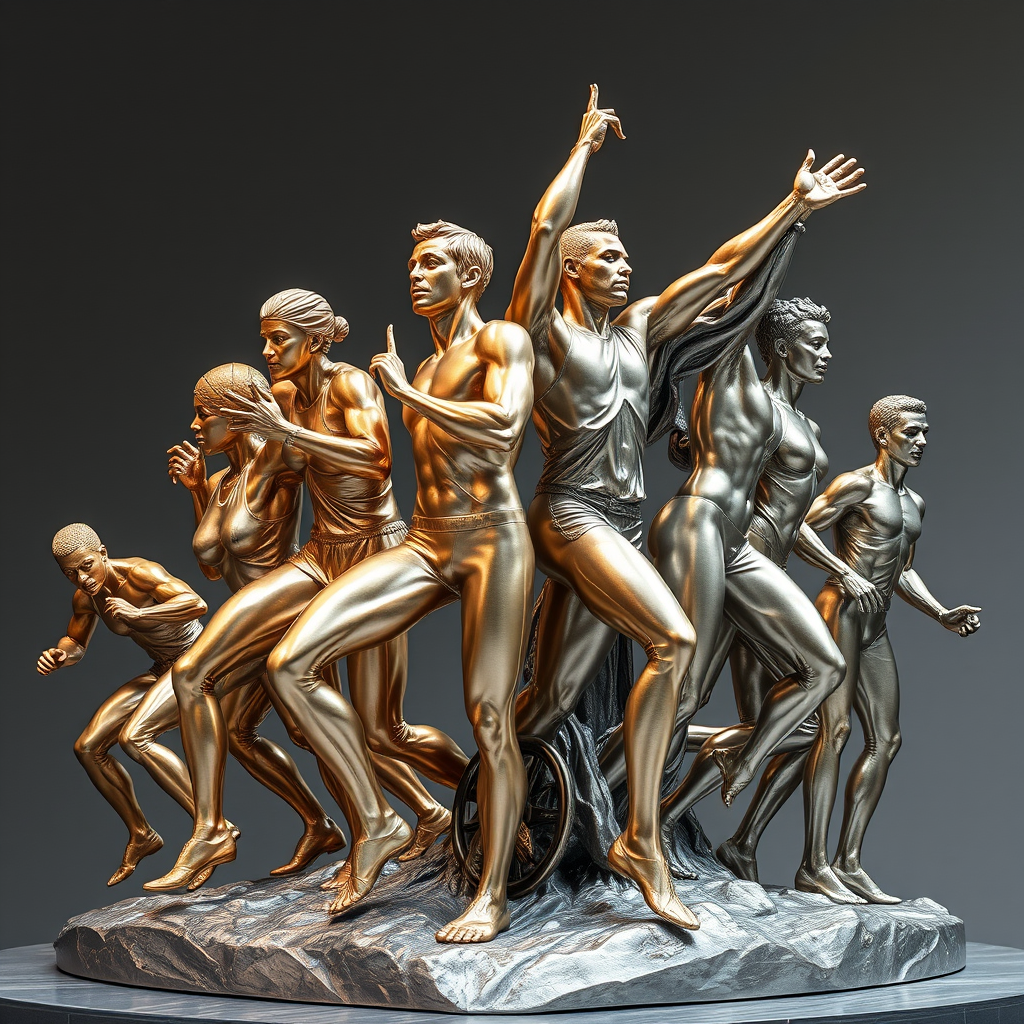




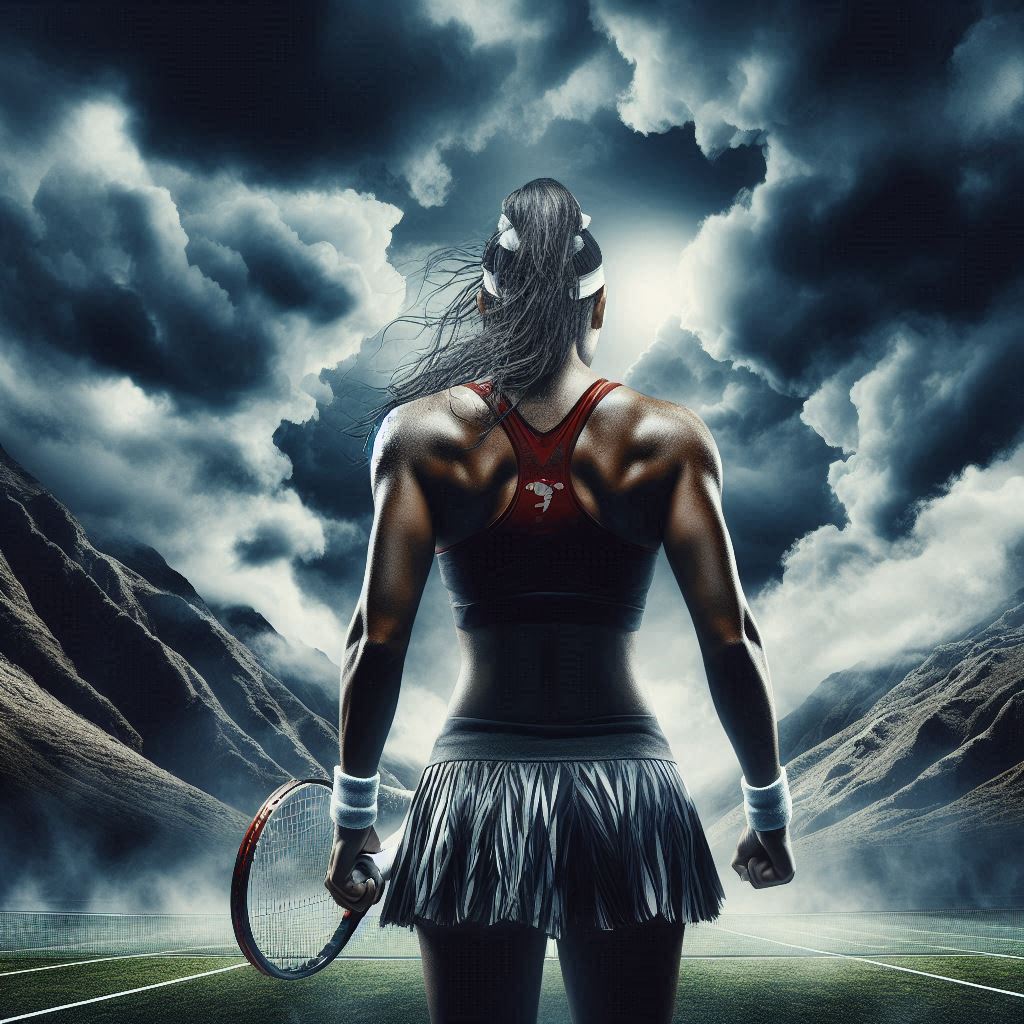
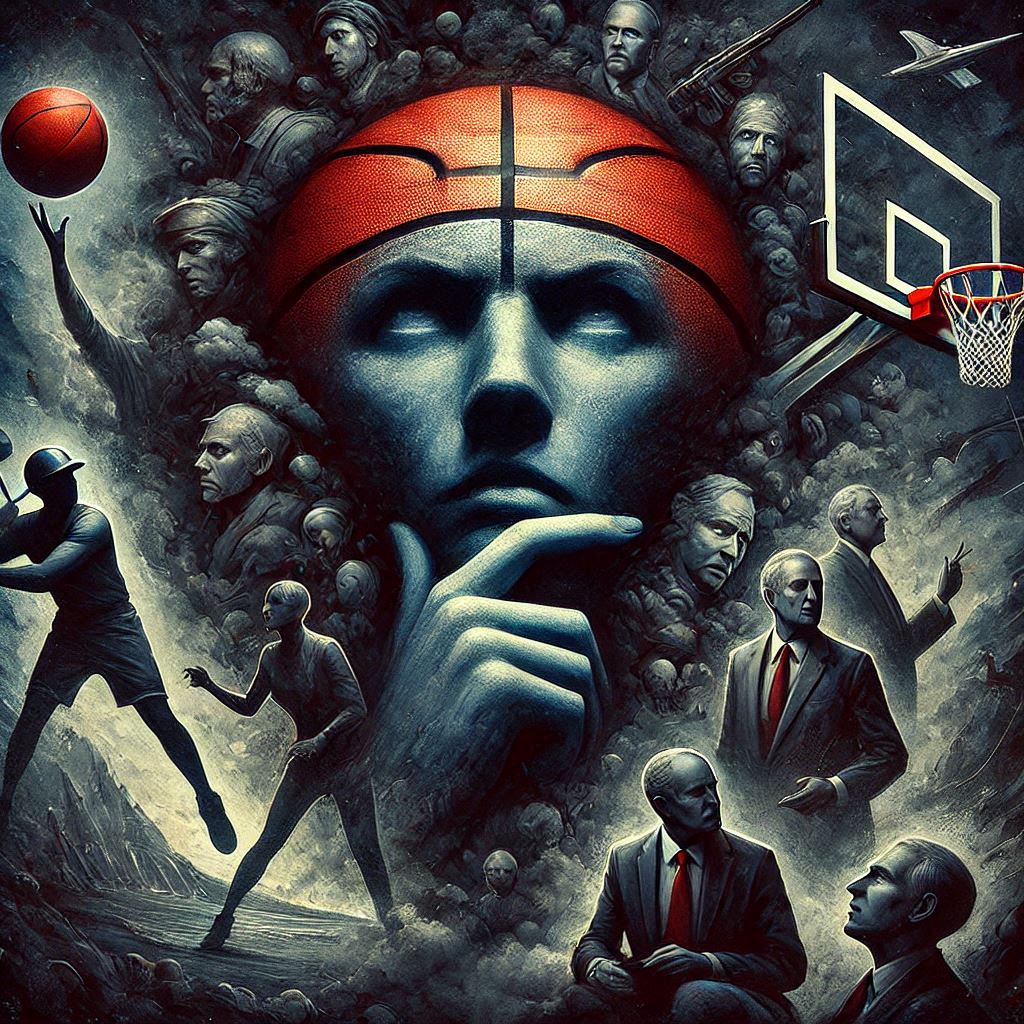


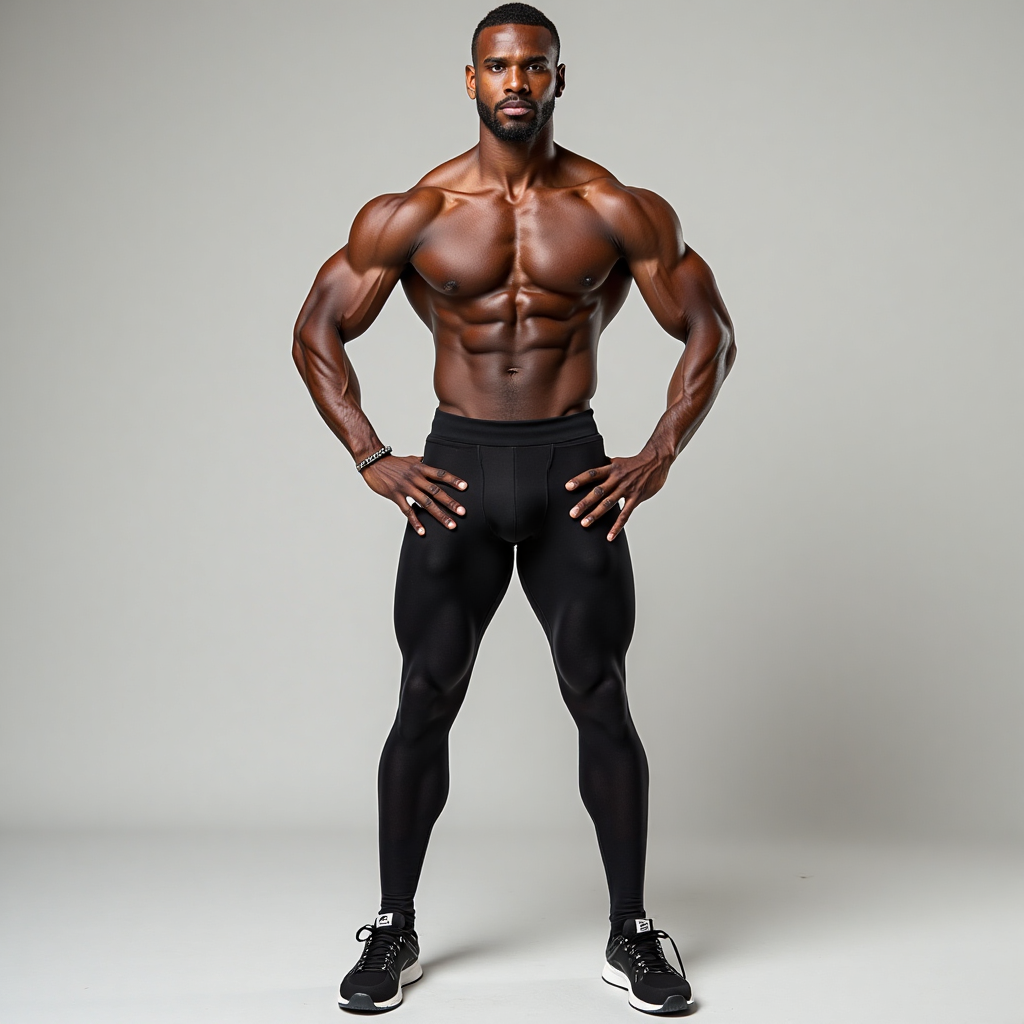


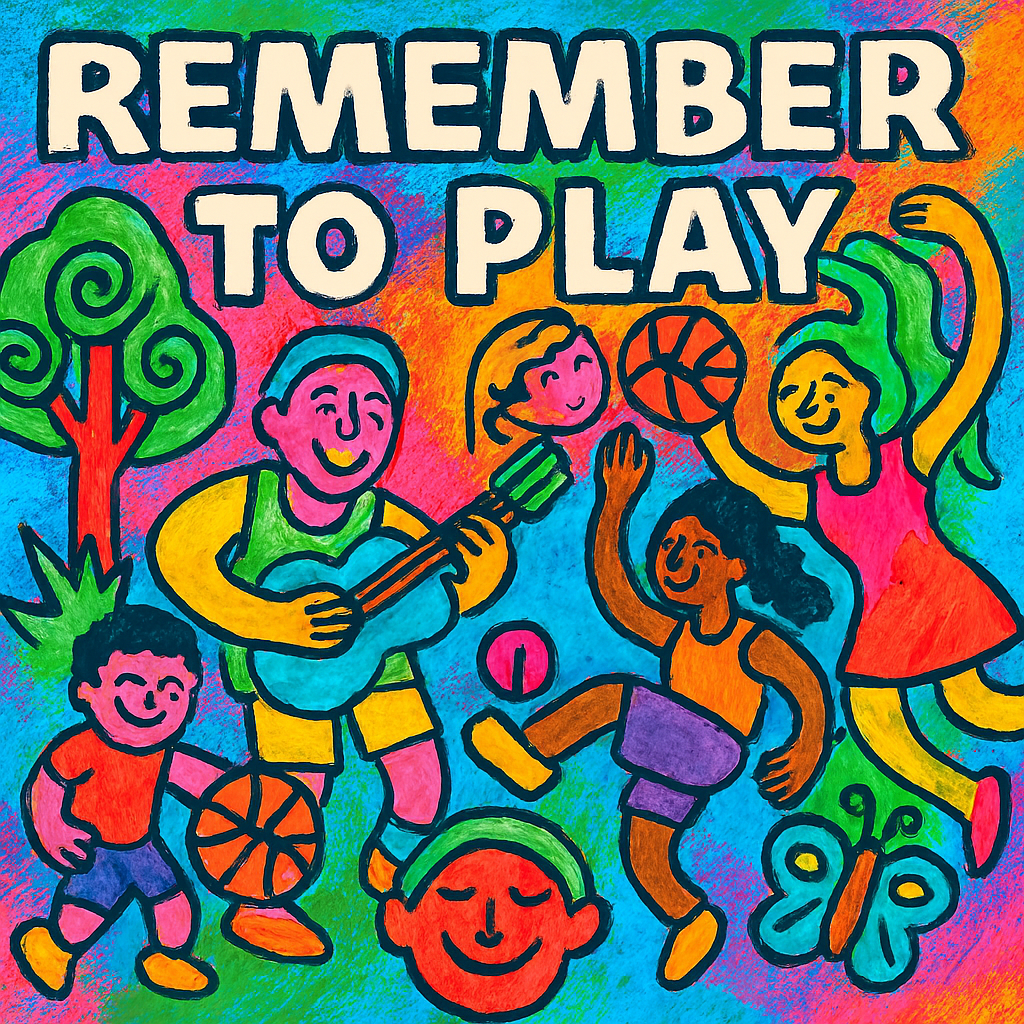
Torvill and Dean’s 6.0 Perfect Score In Sarajevo 1984
[…] to Olympic competition in Lillehammer. Though rules had changed and the sport had evolved, their presence reignited public interest. Their new routine, set to Let’s Face the Music and Dance, was elegant and mature, reflecting […]